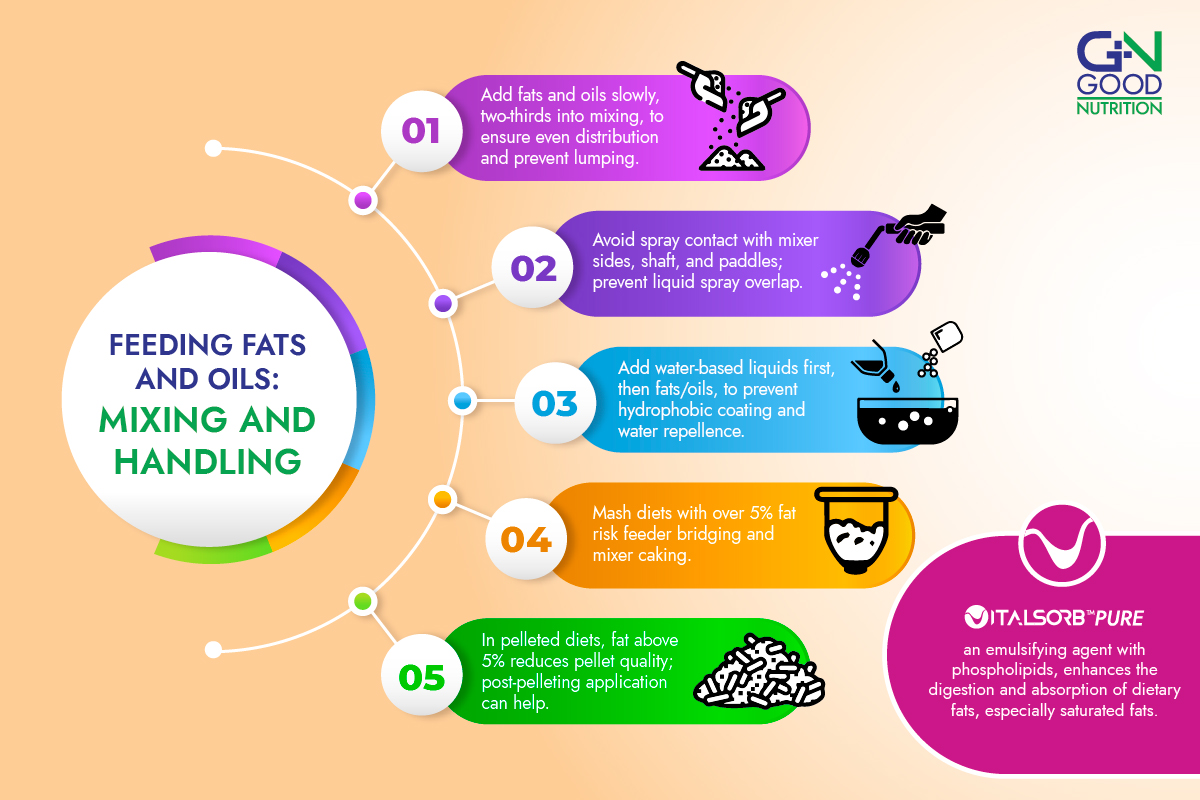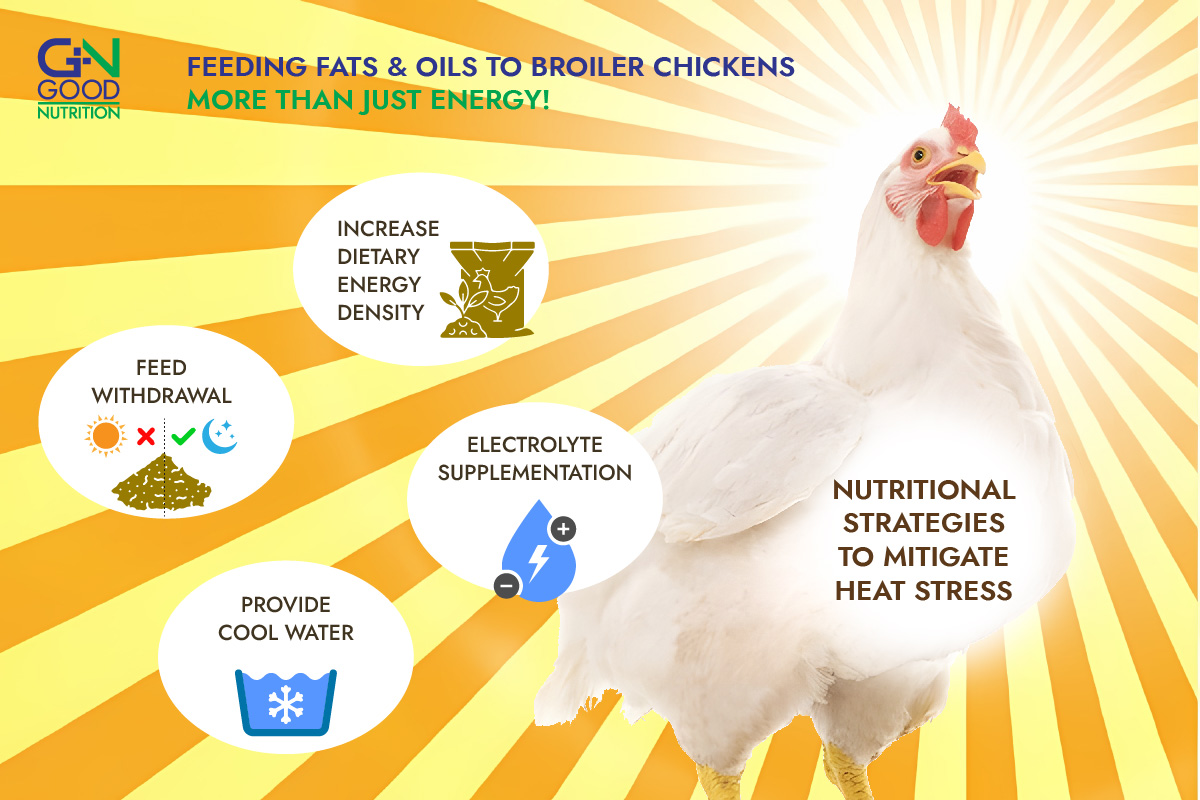When it comes to animal feed formulation, every ingredient plays a critical role in achieving optimal nutrition, efficiency, and feed quality. Among these, fats and oils are essential energy sources, but their incorporation into feed requires precision. Proper handling during mixing ensures even distribution, prevents processing issues, and maximizes nutritional benefits for the animal.
The Art of Adding Fats and Oils
In feed manufacturing, the timing and technique of fat and oil addition make a significant difference. Adding these ingredients too early or too aggressively can lead to uneven distribution, equipment caking, and poor feed texture. To avoid these issues, experts recommend the following best practices:
Timing is Key
Fats and oils should be introduced two-thirds of the way through mixing, once most raw materials are already incorporated. This prevents lumping and ensures a uniform distribution throughout the feed.
Precision in Spraying
When applying liquid fats or oils, it’s crucial to avoid contact with the mixer’s sides, shaft, and paddles. Additionally, liquid sprays should not overlap to prevent uneven coating, which could lead to poor ingredient dispersion.
Sequence Matters
The order in which liquids are added significantly affects feed quality. High-water-content liquids should be added first, followed by hydrophobic fats and oils. If fats or oils are introduced first, they can form a hydrophobic barrier, preventing water absorption and leading to poor feed consistency.
Balancing Fat Levels for Maximum Efficiency
While fats and oils are vital for energy, excessive levels can cause complications in feed processing:
For Mash Diets: Fat levels exceeding 5% can cause feeder bridging and mixer caking, which disrupts feed flow and consistency.
For Pelleted Diets: Fat levels above 5% reduce pellet quality and durability. To prevent this, post-pelleting fat application is a preferred method when higher fat levels are needed.
Enhancing Fat Digestion with Emulsification
Fats are naturally insoluble in water and do not dissolve easily in the gastrointestinal tract. The more emulsified a fat is, the better its digestibility and energy efficiency for the animal.
This is where emulsifiers like Vitalsorb™ Pure come into play. Containing phospholipid components, Vitalsorb™ Pure promotes superior oil-in-water emulsions, enhancing the digestion and absorption of dietary fats—particularly saturated fats. By improving fat breakdown and utilization, emulsifiers help maximize energy yield from feed, ultimately supporting better animal growth and performance.





